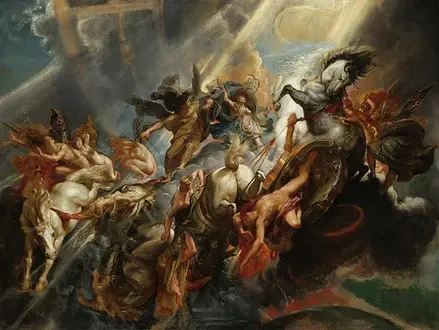Title of Artwork: “The Fall of Phaeton”

Artwork by Peter Paul Rubens
Year Created 1604-1605
Summary of The Fall of Phaeton
When Peter Paul Rubens painted The Fall of Phaeton, he used the Greek myth of Phaeton, which is a common theme in art. This painting is called “The Fall of Phaeton” Rubens chose to show the myth at its most exciting point, with the thunderbolts thrown by Zeus to the right.
All About The Fall of Phaeton
It helps to show Phaeton, the horses, and other people’s faces look horrified because the thunderbolts give them a contrast of light and dark. Their wings are made of butterflies, and they represent the hours and seasons.
When the night and day cycle is interrupted, they become scared and run away. The great astrological circle that runs across the sky is also broken.
Each body is placed on top of each other to make a diagonal oval that separates the dark and light parts of the canvas. In this picture, the bodies are placed in a way that makes it easier for you to keep going around that oval over and over again,
He painted The Fall of Phaeton while in Rome. The painting was probably changed later around 1606/1608, but it’s not clear. It’s been in the National Gallery of Art since January 5, 1990, when it moved there. The Fall of Icarus, Perseus Freeing Andromeda, and The Judgment of Paris are all examples of Greek mythology that Rubens painted, as well as other works.
Information Citations
En.wikipedia.org, https://en.wikipedia.org/.
























